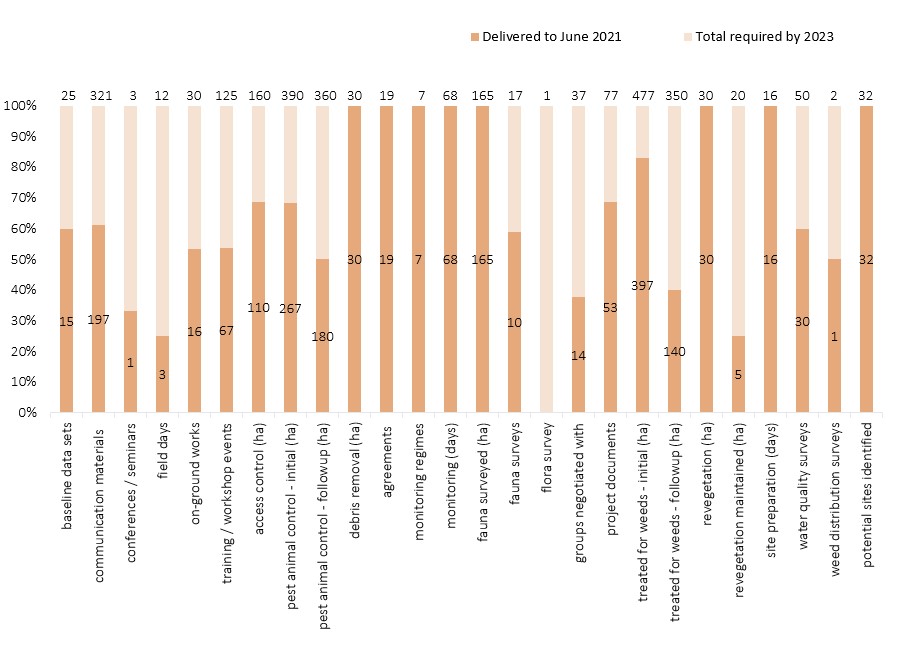Supporting the following Objectives
Wetlands and People
A community restoring the ecological character of the Peel-Yalgorup Ramsar 482 Wetlands

Long Term Goal
By 2050, the ecological character of the Peel-Yalgorup Ramsar System has stabilised or improved
Regional Land Partnerships (Australian Government) Outcomes
Primary Outcome:
By 2023, there is restoration of, and reduction in threats to, the ecological character of Ramsar sites, through the implementation of priority actions (Peel-Yalgorup System)
Secondary Outcome:
By 2023, the implementation of priority actions is leading to an improvement in the condition of EPBC Act listed Threatened Ecological Communities (the Thrombolite community at Lake Clifton)
The 26,530 ha Peel-Yalgorup System is one of the largest and most diverse Ramsar-listed wetland systems in Australia. It meets seven of the nine criteria for Ramsar listing, and meets four of the criteria multiple times. These values are threatened by the rapidly growing urban population and land-use practices.
Our “Wetlands and People, a community restoring the Ecological Character of the Peel-Yalgorup System’s wetlands” is a five year project providing community engagement, filling knowledge gaps, facilitating collaborative management and enabling onground works, including the improvement of over 1,000 ha of our Ramsar site.
On-ground priority actions will address key threats, and associated direct and indirect stresses placed on the Wetlands, including the Threatened Ecological Community (TEC) of thrombolites at Lake Clifton and priority waterbird habitats.
We will build momentum and support through:
- Significant volunteer contributions including citizen science activities
- Filling vital gaps in knowledge of the condition of our Ramsar Site
- Integrated Collaborative management including embedding Noongar cultural values and knowledge to improve Ramsar values
- On-ground works
Project outcomes by 2023 ‘Changes in Asset‘ and ‘Practice and Attitude Change’ are listed below.
For more detail on the project, please view the project summary here.
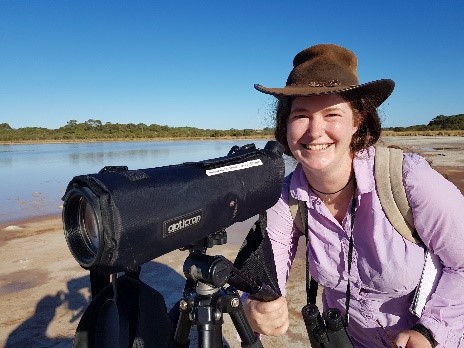
Community Engagement
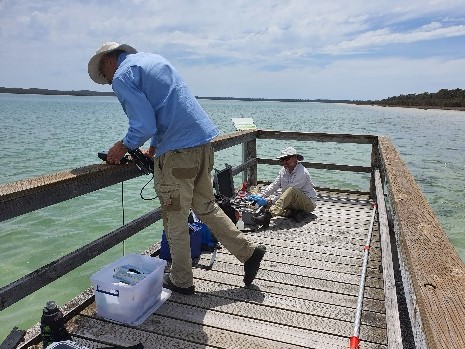
Knowledge Gaps
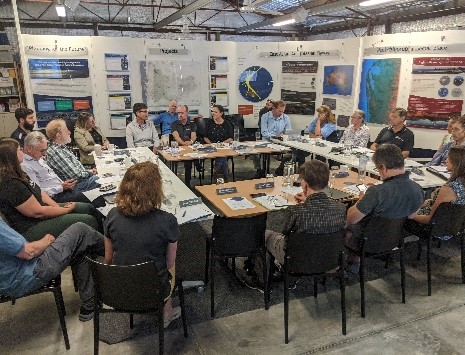
Collaborative Management
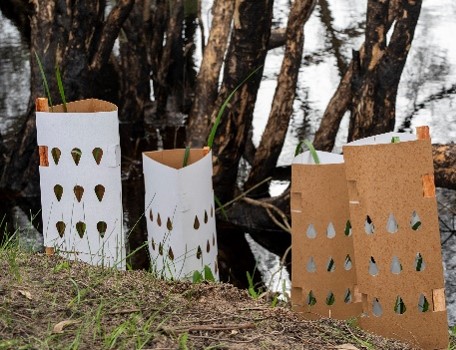
Onground Works
Key Threats
- Excessive nutrients and sediments
- Site disturbance (by people, pets and boats)
- Dredging
- Inappropriate recreation
- Altered hydrology/inundation patterns/groundwater extraction
- Salinity
- Urban and peri urban development
- Agricultural activities
- Recreational fishing
- Habitat fragmentation & loss (terrestrial and aquatic)
- Debris and litter (dumping of rubbish & marine debris/microplastics
- Pest plants and animals
- Disturbance of waterbirds
- Acid sulphate soils and Monosulfidic black ooze
- Climate change
Management Actions
Biophysical
- Debris removal
- Access control
- Pest animal control
- Hydrological investigations
- Habitat restoration
- Weed control
- Acid Sulphate Soil investigations
- Biological investigations
- Monitoring ecological condition
Non Biophysical
- Integrated site management
- Community and technical input
- Social marketing/awareness raising campaigns, programs and events
- Cultural knowledge sharing
- Citizen science events and training
- Enviro-educational programs
- Training – improving skills, knowledge and management practices
- Review and update plans
- Review monitoring data to determine management responses
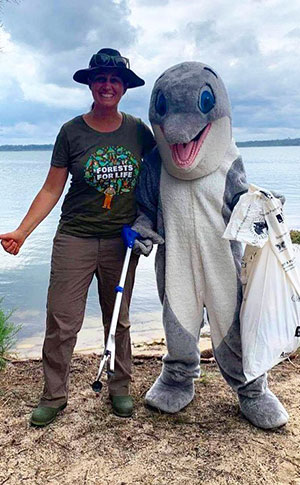
Working Together
The PHCC has led the collaborative management and monitoring of the Ramsar Site since 2007 and continues to facilitate engagement with the 27 key stakeholder groups (members of Ramsar Site Technical Advisory Group) for efficient and effective management and monitoring of the Peel-Yalgorup Wetland System. The TAG meets annually and includes the following members:
- Traditional Owners
- Birdlife WA
- City of Mandurah
- Commercial Fishers
- Conservation Council (WA)
- DPLH (Planning)
- DPIRD (Agriculture)
- DPIRD (Fisheries)
- DBCA (Parks and Wildlife)
- Department of the Environment
- DWER (Waterways)
- DWER (Water Science)
- Dept of Transport
- FRAGYLE
- Lake Clifton Herron Landcare Group
- Friends of Lake McLarty
- Lake Mealup Preservation Society
- Mandurah Bird Observers Group
- MAPTO
- Peel Development Commission
- Recfishwest
- Shire of Harvey
- Shire of Murray
- Shire of Waroona
- Alcoa of Australia
Project outcomes
Changes in Asset (by 2023)
1080 ha of priority riparian and aquatic areas and associated upland habitats of the Ramsar Site has improved management that maintains or improves vegetation and stream condition and/or decreases disturbance to waterbirds and their habitat
The Peel-Yalgorup System has supported at least 1% of the Flyway population of at least 4 waterbird species in three of the years
The Peel-Yalgorup System has supported successful breeding of waterbirds in three of the years
The Peel-Yalgorup System has supported more than 20,000 waterbirds in four of the years
Practice and Attitude Change (by 2023)
Through a collaborative management approach the Peel-Yalgorup System retains its listing as a Wetland of International Importance
Inform and improve management of the Peel-Yalgorup System through monitoring and reporting the status of the Peel Yalgorup System’s migratory and resident waterbirds against the Limits of Acceptable Change (Management Triggers)
Inform and improve management of the Peel-Yalgorup System through extending monitoring and reporting of the status of the System by filling priority knowledge gaps for at least five previously unmonitored components/processes
60 Noongar people will be engaged with the delivery of Ramsar activities
All local Noongar Elders and Traditional Owners are involved with the planning and delivery of Ramsar activities to embed Noongar cultural values and knowledge to improve management of the Site
The skills and knowledge of our community volunteers will be improved to increase community sector stewardship for conservation and wise use of the Peel-Yalgorup wetlands through at least two citizen science programs, 15 events and 12 field days, supporting 275 individuals to monitor Ramsar values
The local community has an increased awareness of the Ramsar and cultural values of the Peel-Yalgorup wetlands through engagement activities, Including 11O events, with at least 4300 individuals, and 40 groups, including those that use or manage the site and its catchment
Monitoring and Evaluation
An effective monitoring and evaluation framework is being used to ensure the Project delivers on its outcomes.
Our PHCC project logic provided the framework for the design, delivery, review and evaluation of this project. The four sub-projects have established work plans to guide implementation in accordance with the project logic. These detailed plans outline the tasks and timeframes required to deliver each of the project services (outputs) and in tum achieve the project’s outcomes.
Short and medium term outcomes have been developed for this project and will contribute to the long term outcomes for restoring and reducing threats to the ecological character of the Ramsar Site.
Management Actions (outputs) are detailed on the graph below, with progress in delivery up to June 30, 2021 showing that we are on target to meet our targets, as defined in our Agreement with the Australian Government.

